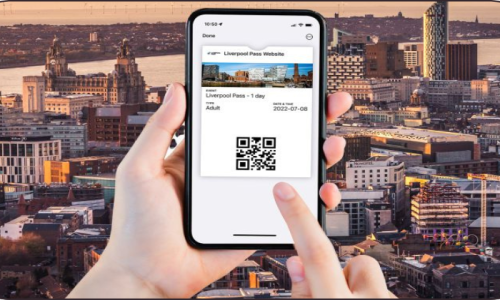The digital world with all its benefits and convenience, has become a complex place where every day people navigate different types of platforms like online banking, social media, shopping, and smart devices. This interconnection leads them to an ever-evolving threat landscape which involves cybercriminals who want to steal your money and hack personal information.
Cybercriminals are smarter, faster, and they use cutting-edge technology like Artificial Intelligence to perform highly convincing scams.
Understanding these threats and knowing where to get assistance is very crucial. This guide aims to empower individuals with practical, straightforward steps to build strong personal online defences. Let’s read further.
I. Your Digital Front Door: Mastering Passwords
Passwords function as the primary wall against unauthorised access to accounts, from email to online banking. The National Cyber Security Centre (NCSC), the UK's leading authority on cyber security, promotes for a surprisingly simple and effective method: combining three random words. It focuses on creating a phrase that is both long enough and strong enough to discourage criminals. For instance, "apple nemo biro" or "branchpaincurtain" are considered as strong passwords. Adding numbers or special characters between these words can further enhance their strength.
A weakness arises from the use of common passwords, such as "123456" or "password," or details that are easily discoverable like birthdays, pet names, or family names. These are typically the first combinations cybercriminals try. Also reusing passwords across multiple accounts is also a severe risk. The criminals can hack that same password to attempt access to all your other accounts. This tactic, known as "credential stuffing," can lead to identity theft, financial loss, and various forms of fraud.
Now remembering dozens of unique, strong passwords is difficult, that is where password managers come. These applications, available across phones, tablets, and computers, can generate exceptionally strong, unique passwords for each account and store them securely behind a single master password. They often include features for auto-filling login details.
Many modern browsers including Google Chrome and Firefox also offer built-in password management, which is generally considered safer than relying on weak or reused passwords. They also offer additional features, such as identifying fake websites and telling users if a stored password has appeared in a data breach.
II. The Essential Second Key: Two-Factor Authentication (2FA)
Even the strongest, most unique password can be stolen. Data breaches occur, and phishing attempts can trick individuals into revealing their credentials. This is precisely where Two-Factor Authentication (2FA), also known as Multi-Factor Authentication (MFA) steps in. It acts as a critical second line of defence to protect your account and prevents unauthorized login.
Two-factor authentication requires users to verify their identity using two factors to gain access. This involves something a user knows (their password) combined with something they have (such as their phone, which receives a code) or a fingerprint or facial scan. That way even if cybercriminals somehow obtain a password, they cannot access the account without that second factor, which should only be in the legitimate user's possession. This significantly reduces the risk of an account being compromised.
The NCSC strongly recommends setting up 2FA on all important accounts, particularly email, banking, social media, and online shopping. The option to enable it is typically found within the security settings of an account. Not enabling 2FA on critical accounts is akin to leaving a second lock off a front door.
III. The Art of Dodging Digital Deception: Spotting Scams
Cybercriminals are very experts and their primary tool is to trick individuals into doing what they want. Phishing, smishing tactics are constantly developing, becoming increasingly challenging to detect, especially with the use of AI.
It was once simpler to identify a scam. Poor spelling, questionable grammar, or unusual email addresses served as clear indicators. This is no longer the case. Scams are becoming more sophisticated, often mimicking trusted brands, government schemes, streaming services, tech companies, and telecommunications providers with alarming accuracy. These scams exploit current events, seasonal trends (such as Black Friday or tax season), and emotional triggers to pressure individuals into acting without careful consideration.9
Several common red flags you should know to detect that the other person is fraud:
- Authority: Is the message claiming to originate from an official source like a bank or a government department? Criminals mostly copy important organisations.
- Urgency: Is there a demand for immediate action ("within 24 hours," "immediately") or a threat of fines or negative consequences, such as account suspension? This tactic is designed to produce panic within the individual.
- Scarcity: Is something in limited supply being offered, such as concert tickets, money, or a cure for medical conditions? The fear of missing out on a perceived good deal or opportunity can force you for a quick response.
- Requests for Sensitive Information: Legitimate organisations do not request personal information such as bank details or passwords via email, text, or calls. So be aware of it.
- Suspicious Links/QR Codes: Hovering over links before clicking reveals the actual URL. Caution is advised with unexpected attachments or QR codes, particularly within emails.
Common Scam Red Flags and What to Do
|
Type of Scam
|
Red Flags
|
What to Do
|
|
Email (Phishing)
|
- Odd-looking senders; Unexpected attachments or QR codes
- Requests for personal information
- Urgent or threatening tone (e.g., "Your account will be suspended!")
|
Do not reply. Do not click on links or open attachments.
|
|
Text (Smishing)
|
- "You've won a prize!" texts;
- Links asking for payment or account details;
- Numbers that do not appear local
|
Do not reply. Do not click on links.
Forward suspicious text messages to 7726 (free service in UK).
|
|
Call
|
Caller asking for your password while claiming to be from your bank; Spoofed numbers that appear legitimate
|
Hang up immediately and block the number.
|
IV. Your Data, Your Rights: Navigating UK GDPR
In the UK, personal data is not merely something organisations collect; it is information over which individuals possess fundamental rights. The UK General Data Protection Regulation (UK GDPR) serve as a legal shield, controlling how organisations handle personal information.
Under UK GDPR, individuals are granted several powerful rights relating to their personal data:
- Right to be informed: Individuals have the right to know how their data is being collected, used, and shared, including retention periods. This information must be concise, transparent, intelligible, and easily accessible.
- Right of access: Individuals can request a copy of the personal data an organisation holds about them.
- Right to rectification: If data is inaccurate, individuals have the right to have it corrected.
- Right to erasure (Right to be forgotten): In specific circumstances, individuals can request that their personal data be deleted.
- Right to restrict processing: Individuals can ask organisations to limit how they use their data.
- Right to data portability: This allows individuals to obtain and reuse their data for different services.
- Right to object: Individuals can object to how their data is processed in certain situations.
- Rights related to automated decision-making and profiling: Individuals possess rights when organisations use their data for decisions made without human involvement or to predict their behaviour or interests.
V. Beyond the Desktop: Securing Your Devices
Cybersecurity is not confined to laptops or desktop computers. In increasingly connected lives, smartphones, tablets, and even smart home devices represent potential entry points for cybercriminals. Protecting these devices is equally important.
Smartphones and tablets, often carried everywhere, hold a vast amount of personal information and are constantly connected. For these devices, robust security practices are essential. Always enable a strong PIN or password for device access. Many devices offer fingerprint or facial recognition, which are excellent supplementary security features.
An often-overlooked aspect of security for all devices is keeping software updated. Manufacturers (e.g., Apple, Android, Microsoft) and app developers regularly release updates that contain vital security fixes. It is advisable to enable automatic updates where possible and to install manual updates immediately when prompted. Outdated software represents an open door for hackers.
Attention is also advised when connecting to unknown Wi-Fi hotspots, such as those found in cafes or hotels, as they can be insecure. It is often difficult to ascertain who controls the hotspot, and there is no guarantee of its security.
VI. When Things Go Wrong: UK Support and Reporting
Suspicious emails should be forwarded to [email protected]. The National Cyber Security Centre (NCSC) will investigate these reports and may collaborate with hosting companies to remove malicious websites.
Suspicious text messages, or "smishing" attempts, should be forwarded to 7726. This free service reports the message to the mobile phone provider.
Scam or misleading advertisements are reported to the Advertising Standards Authority.
If an individual has been a victim of an online scam or fraud, particularly if money has been lost or an account has been hacked, specific reporting channels exist. For residents of England, Wales, or Northern Ireland, reports should be made to Action Fraud, either online at www.actionfraud.police.uk.
Key UK Cybercrime Reporting Services
|
Scenario
|
Action / Who to Contact
|
Contact Details
|
|
Suspicious Email
|
Forward to National Cyber Security Centre (NCSC)
|
[email protected]
|
|
Suspicious Text Message (Smishing)
|
Forward to mobile phone provider via short code
|
7726 (free)
|
|
Suspicious Advert
|
Report to Advertising Standards Authority (ASA)
|
ASA website
|
|
Online Scam / Fraud (Lost Money or Hacked)
|
England, Wales, N. Ireland: Action Fraud
Scotland: Police Scotland
|
actionfraud.police.uk
|
|
Data Misuse / Breach (GDPR)
|
Information Commissioner's Office (ICO) (after contacting organisation)
|
ICO website
|
VII. A Mindset for Online Safety
The importance of regular software and app updates across all devices (phones, tablets, computers, smart home gadgets) is mandatory. These updates contain vital security patches that close weaknesses cybercriminals could exploit. Enabling automatic updates whenever possible is highly recommended.
Cybersecurity is not solely the responsibility of an IT department, neglectful employees are the number one cause of cybersecurity breaches, indicating that everyone has a role to play. Furthermore, the belief that Apple devices are immune to hacking is false. Apple products can and do get compromised, and users who hold this belief may be more susceptible to data loss.
The NCSC warns that developments in AI are likely to accelerate the time between the discovery of software vulnerabilities. This indicates an increasing pace of threat evolution.
Lastly
AI is making scams much harder to spot. It's getting tough to tell what's real and what's fake online because artificial intelligence can create scams that look real.
For example, tools like ChatGPT can write phishing emails and messages that have perfect grammar and sound completely natural. This means you can't just rely on bad spelling or awkward phrasing to spot a scam anymore.
























